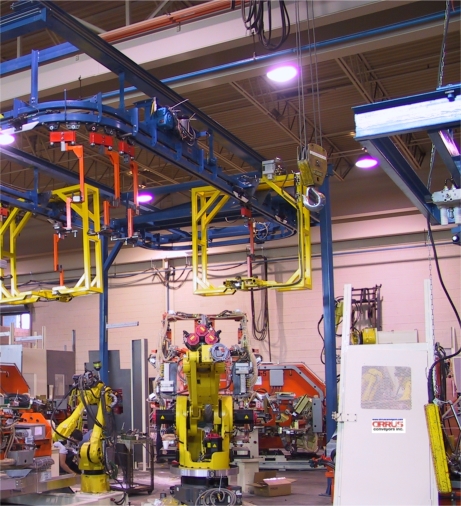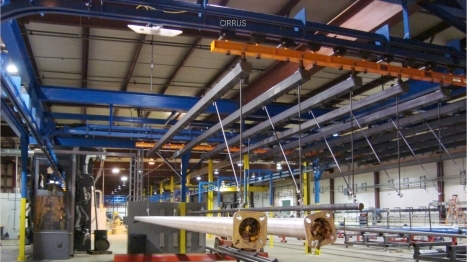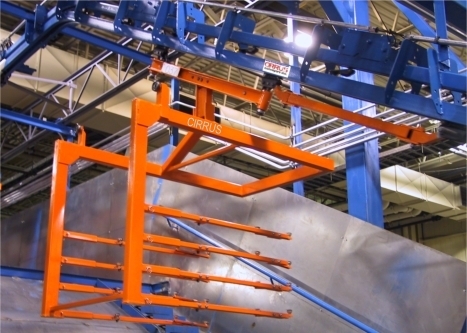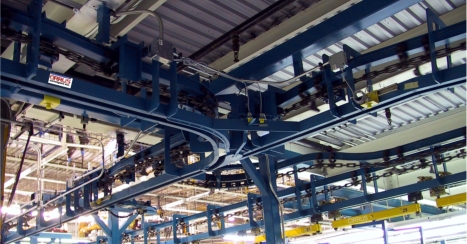Slash Costs with Power & Free
Why Work-In-Progess Accumulates
One of the most interesting challenges in modern manufacturing is keeping a smooth flow of product moving through a series of uneven processes. In a perfect world, process ‘A’ would produce a widget and drop it on the doorstep of process ‘B’ exactly when ‘B’ wants it and so on down the line to ‘C’, ‘D’ and ‘E’ all the way to the shipping door.
There may be manufacturers that can achieve this kind of perfection, but by the very nature of what they’re making, most can’t — at least not with traditional methods. The timing of different processes varies too much. And some processes, such as washing or curing, often can’t be accelerated without enormous investments in manpower or equipment and real-estate.
How do you get faster processes to hand off smoothly to slower ones? Better yet, how do you do this without accumulating a pile of work-in-process which has to be broken down, perhaps sorted, and then transferred by forklift and human effort, to slower operations?
The Cost of Poor Product Flow
Direct manufacturing operations are not’t the only source of plant inefficiency. Many companies who work their manufacturing processes into peak efficiency still aren't in a position to fully realize the value of these improvements. In some instances, the improvements make their situation worse, because the increased work-in-process compounds many of the existing product flow difficulties.
Here are some indicators that your operation may suffer from product flow inefficiency:
-
You have unbalanced processes.
-
You accumulate piles of unfinished product.
-
You do too much inter-process handling.
-
You do too much rework or scrap too much damaged product.
-
You are always short of floor space.
-
You are perpetually in danger of being run over by a fork lift truck.
-
You have processes waiting for parts to arrive from other processes.
Each of the above points carries some measurable amount of financial penalty, either direct (e.g. repairing damaged goods, maintaining fork lift trucks) or indirect (e.g. lost production time, physical injury). If you can come to terms with these costs you will have a basis for comparison when looking for solutions.
Considering the Possibilities
A way of evaluating the costs is envisioning perfect product flow and assigning some honest numbers to the costs eliminated and values gained. In this perfect world, your product, on leaving any process, simply disappears until the exact moment it’s needed by the next process. Whereupon, it reappears on that process’s doorstep. Expect this to happen with little or no human intervention and without regard to any rate discrepancies between the operations. If you’re short of floor space, expect to gain some of it back. Expect to add no production machinery while maximizing the return from existing machines.
Are you dreaming in Technicolor or is this kind of thing actually achievable and can it be funded out of efficiency/productivity gains?





